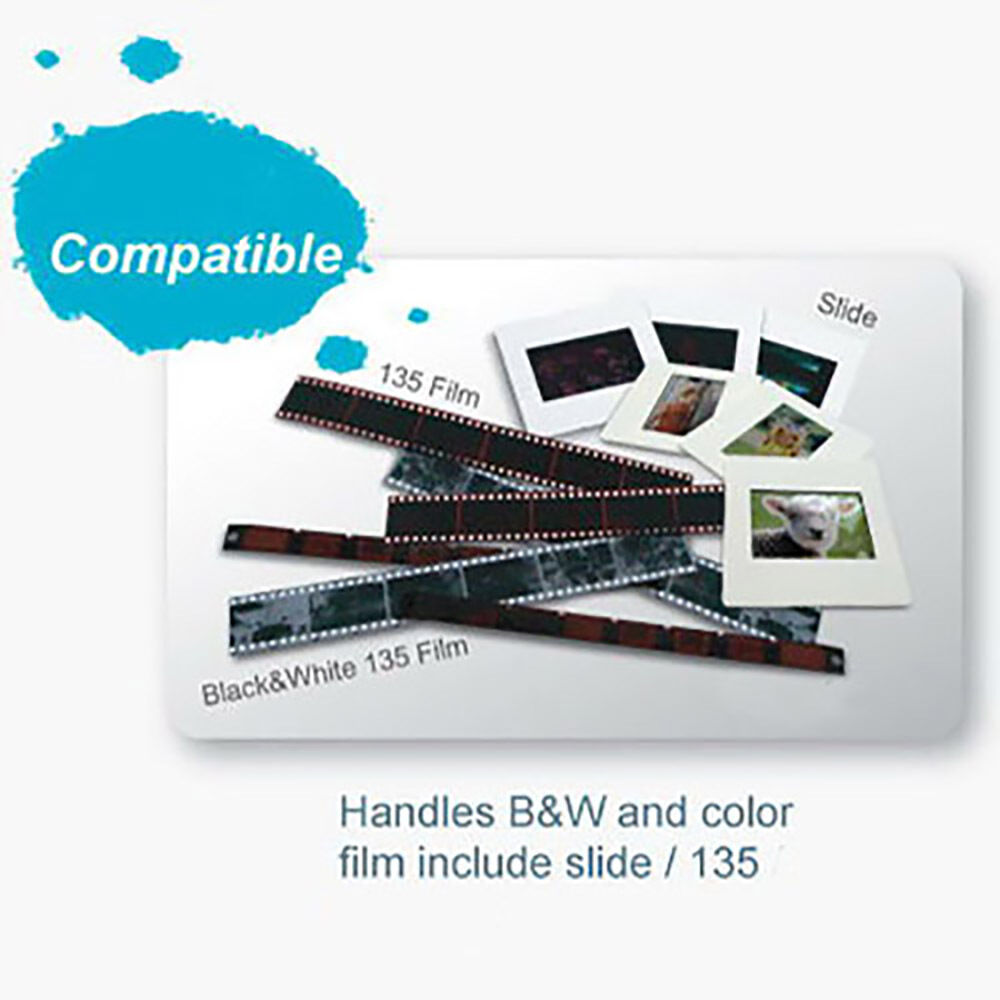
- BEST PHOTO SLIDE SCANNER FOR MAC UPDATE
- BEST PHOTO SLIDE SCANNER FOR MAC DRIVER
- BEST PHOTO SLIDE SCANNER FOR MAC SOFTWARE
Picking a scanner that can handle the size of the originals you need to scan seems like an obvious point, but it's easy to overlook. If you're scanning 35mm slides or negatives, or something small and finely detailed like a postage stamp, you'll need a scanner that claims an optical resolution of at least 4,800ppi. Some kinds of originals, however, require higher resolution. For photos, unless you plan to zoom in on a small part of the photo or print the photo at a larger size than the original, 600ppi is more than enough. 300ppi is almost always sufficient, and it's hard to find a scanner today that maxes out at less than 600ppi. For, say, tax documents, even a 200-pixel-per-inch (ppi) scan will give you good enough quality for most purposes. What Resolution and Scan Size Do You Need?įor most scanning, resolution isn't an issue.
BEST PHOTO SLIDE SCANNER FOR MAC DRIVER
Manual duplexing in the driver is the most economical alternative, and it is a good choice if you don't scan two-sided documents very often or you're on a tight budget. In contrast, a scanner with a driver that supports manual duplexing will let you scan one side of a stack and then prompts you to flip and re-feed the stack to scan the other side, with the scanner driver automatically interfiling the pages. A more ordinary duplexing ADF will just scan one side, turn the page over mechanically, and only then scan the other. A design like this will be faster than a scanner with a simple duplexing ADF, but it will likely also cost more. The best, swiftest duplexing scanners have two scan elements, so they can scan both sides of a page at the same time. If you expect to frequently scan documents that are printed on both sides, you'll want a duplexing scanner, a duplexing ADF, or a scanner with a driver that includes a manual-duplex feature. Do You Need Duplex (Two-Sided) Scanning?ĭuplex scanning means scanning both sides of a page. Some ADFs can also handle stacks of business cards well. If you occasionally have a document that is more pages than the ADF capacity, you can add more pages during the scan as the feeder processes them. Pick an ADF capacity based on the number of pages in the typical document you expect to scan. If you'll be scanning longer documents on a regular basis, however, you'll want an automatic document feeder (ADF) that will scan an entire stack of pages unattended. If you'll primarily be scanning one or two pages at a time, a manual sheet feeder is probably all you need, or you can get by just fine with the scanner feature on an all-in-one (AIO) printer. Some sheet-fed scanners can also handle thick originals such as ID cards. Having to open a flatbed lid and set a page in place is a minor chore, but having to repeat the process 10 times for a 10-page document is tiresome. If your main scanning need is scanning documents on a regular basis-particularly those longer than one or two pages-you almost certainly want a document-centric scanner equipped with a sheet feeder.
BEST PHOTO SLIDE SCANNER FOR MAC UPDATE
We regularly update our Best Scanners roundup, so should you encounter an "oldie but goodie," it simply means that no similar model that we've reviewed has yet surpassed it.

Scanner models tend to stay on the market for a long time between iterations, and this is especially true of flatbed photo scanners. Keep in mind, however, that even brand-new, unscratched plastic carriers can degrade scan quality somewhat. If you need to scan this sort of original only once in a while, you may be able to get by with a sheet-fed scanner that comes with a plastic carrier to protect the originals.

3D scanners-for scanning objects to 3D files for display or printing on a 3D printer-are a different beast entirely.)ĭelicate originals such as photos and stamps can go through a sheet feeder, but you risk damaging them. (When we talk about scanning objects, here we're talking about scanning 3D objects to two-dimensional images. Do You Need a Flatbed Scanner?įor photos or other easily damaged originals, bound material, and 3D objects, you need a flatbed scanner, which has a large glass platen on which you place the documents, photos, books, or items. This will tell you the kind of scanner you should be looking at: a classic flatbed, a model with a sheet feeder, or something else. You should also consider details such as the maximum size of the originals and whether you'll need to scan both sides of document pages. Somewhat less common are objects such as coins or flowers. Photos and unbound documents are the most obvious things to scan, but you might also need to scan bound books, business cards, film (slides and negatives), magazines, receipts, and easily damaged originals like postage stamps. Knowing what and how often you expect to scan will tell you everything you need to know about the features you'll need.
BEST PHOTO SLIDE SCANNER FOR MAC SOFTWARE


 0 kommentar(er)
0 kommentar(er)
